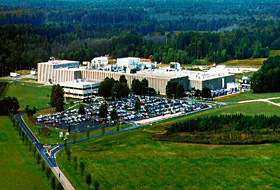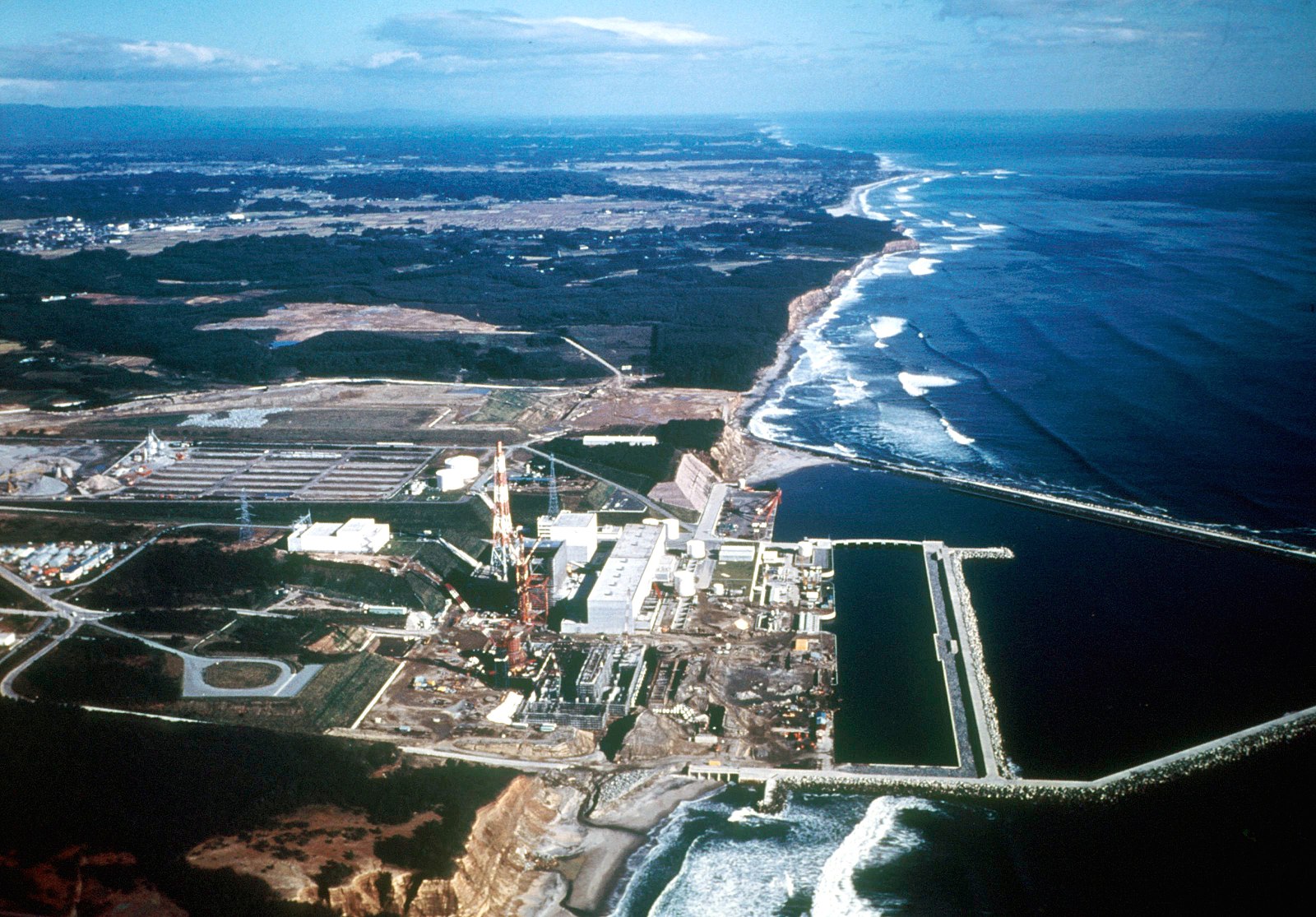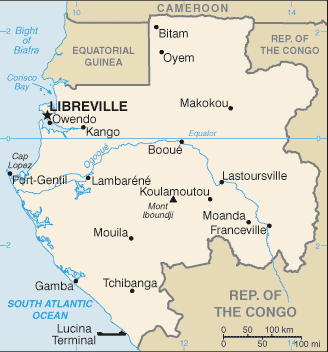Westinghouse Electric Company LLC was created in 1998 from the nuclear power division of the original Westinghouse Electric Corporation. It provides nuclear products and services to utilities around the globe. These services and products include nuclear fuel, service and maintenance, instrumentation, control and design of nuclear power plants.
In 1999, the owners of WEC sold the new company to British Nuclear Fuels Limited. In 2006, WEC was sold to Toshiba, a Japanese company. In 2015, Toshiba ran into financial difficulties and in 2017, Westinghouse filed for Chapter 11 bankruptcy. IN 2018, Toshiba announced that it was selling WEC to Brookfield Business Partners.
Westinghouse opened a nuclear fuel fabrication plant in Columbia, South Carolina in 1969. Through the changes of name and ownership, Westinghouse continued to operate the plant. Today it employs about a thousand people.
An attempt has been made to build a facility at the Westinghouse Columbia site for the manufacture of Mixed Oxide fuel, a combination of uranium and plutonium for use as reactor fuel. The plutonium would come from purified stocks of plutonium originally intended for nuclear weapons. There have be political and public opinion battles over the MOX facility which been started and halted several times and is only partially complete.
In 2011, there was a leak in an underground contaminated water line under the concrete floor slab of the Solvent Extraction Area at the WEC fuel fabrication facility. Uranium escaped from the plant and contaminated ground water. In one area, the contamination exceeded the levels allowed for drinking water. There was little effort to notify the public and nothing was done to clean up the leaked materials. WEC does not know the amount or spread of the radioactive materials.
There is known to be contaminated soil under one of the buildings on the site and WEC has announced that it will not be cleaned up until after the site is shut down and the building torn down. WEC has applied for a forty-year license to continue operations at the site. If the license is granted, WEC will not deal with the contaminated soil from the 2011 leak until 2058 at the soonest. It is possible that during that forty-year extension, the contamination in the soil could leak out and further contaminate drinking water in the shallow aquifer under the Columbia fabrication facility.
Last month, there was another leak at the WEC Columbia facility. Uranium contaminated water leaked through a three-inch crack in the floor of the nuclear fuel fabrication facility. Below the facility, levels of radioactive contamination were a thousand times above the normal levels found in soil. There are concerns that the contamination could spread to drinking water supplies.
There was a public hearing where groups and individuals attacked Westinghouse not just for the recent leak but for a history of polluting groundwater around the WEC Columbia site. The public was upset about the possibility that if WEC would get the forty year extension license, they would make no move to cleanup the contamination from the recent leak until the site was shut down in forty years. This is just another example of the corporate lack of responsibility that I have blogged about many times.
Blog
-

Radioactive Waste 348 – Westinghouse Columbia Fuel Fabrication Plant Is Leaking
-

Geiger Readings for Aug 17, 2018
Ambient office = 123 nanosieverts per hour
Ambient outside = 104 nanosieverts per hour
Soil exposed to rain water = 104 nanosieverts per hour
Beefsteak tomato from Central Market = 99 nanosieverts per hour
Tap water = 99 nanosieverts per hour
Filter water = 85 nanosieverts per hour
-

Radioactive Waste 347 – Fukushima Cleanup May Be Exploiting And Endangering Workers
The Yakuza is a Japanese crime syndicate that is powerful in the Japan real estate and construction businesses. They supply workers through layers of recruiting firms to Japanese nuclear power plants. There is an old saying that when a man reaches the end of his luck, he winds up working at a nuclear power plant. Years ago, I read stories of homeless people being recruited off the street to mop up spilled coolant at Japanese nuclear power plants without being warned of the dangers of what they were doing.
The Fukushima disaster took place in Japan in March of 2011 when an underwater earthquake caused a tidal wave that flooded the Fukushima nuclear power plant and cause the meltdown of three reactors and a massive explosion. Stories were published that there were two tiers of workers. The highly paid nuclear technicians and the maintenance works that may have been recruited by the Yakuza. It was reported that the nuclear technicians had good dosimeters and radiation suits while the lower paid maintenance workers had sub standard dosimeters and radiation suits. Ironically, when the disaster struck, a lot of the nuclear technicians fled while a lot of the maintenance workers stayed and kept working.
It has been over seven years since the disaster and radioactive water from Fukushima is still being pumped into the Pacific Ocean. There are still questions about the disposition of the fuel in reactors that melted down. Some evacuees have still not returned to their home. Radioactive fallout is still being discovered all over Japan. Now there are reports about the mistreatment of low-level workers at Fukushima.
The U.N. says that tens of thousands of workers including migrants and homeless people are at risk for exploitation at Fukushima. They may not be being told about the dangers of working around radioactive materials. The U.N. also says that some workers may have been coerced into working in hazardous conditions on the Fukushima cleanup because they were in desperate financial circumstances. They may not have been given proper training and protection. Big contractors used hundreds of smaller contractors without experience in the nuclear industry to recruit workers.
The U.N. experts said the situation “created favorable conditions for the abuse and violation of workers’ rights”. Workers are “often exposed to a myriad of human rights abuses, forced to make the abhorrent choice between their health and income, and their plight is invisible to most consumers and policymakers with the power to change it”.
The Radiation Worker Central Registration Centre of Japan says that about seventy-seven thousand decontamination workers were hired at Fukushima between 2011 and 2016.The Japanese Ministry of Health, Labor and Welfare has reported that over forty-six thousand workers were employed in 2016 alone on the Fukushima cleanup.
The Japanese authorities are working on an education campaign about what they are calling the “revitalization” of Fukushima. The purpose of the campaign is to provide information and transparency about the cleanup process. -

Geiger Readings for Aug 16, 2018
Ambient office = 135 nanosieverts per hour
Ambient outside = 84 nanosieverts per hour
Soil exposed to rain water = 84 nanosieverts per hour
Avocado from Central Market = 107 nanosieverts per hour
Tap water = 100 nanosieverts per hour
Filter water = 92 nanosieverts per hour
-

Nuclear Reactors 604 – Ancient Natural Nuclear Reactors In Gabon
I like to say that nuclear power is the most complex, expensive and dangerous way to boil water ever invented by the human race. To think that natural processes could have created a crude nuclear reactor might seem like saying that natural processes could create a car but apparently there were natural nuclear reactors many years ago.
Gabon (officially the Gabonese Republic) is a small country on the west coast of Africa, south of the Ivory Coast. It was once a French colony. Oklo is a region near the Gabonese town of Franceville in the Uaut-Ogooue province of Gabon. In 1956, French prospectors found uranium in Oklo. France immediately began mining uranium there, but the mines were exhausted before the year 2000.
In 1956, Paul Kazou Kuroda, a Japanese-American chemist and nuclear scientist, predicted that it might be possible for certain natural environmental conditions to give rise to nuclear fission reactions. In 1972, Frances Perrin, a French physicist, found geochemical evidence of natural nuclear fission in circumstances in Oklo very close to those predicted by Kuroda. The evidence for natural fission processes including the balance of some isotopes including neodymium, ruthenium and uranium. Evidence for such reactions were eventually found at sixteen sites in Oklo. Oklo is the only place in the world where such natural nuclear fission reactions have been found.
The natural fission processes occurred because uranium-rich ore deposits were flooded by groundwater which acted as a neutron moderator. Nuclear chain reactions were the result. The fission process generated heat which caused the ground water to boil away, slowing or halting the reaction. After the ore deposit cooled and the water returned, the reaction started again. This cycle took about three hours. The reactions went on for hundreds of thousands of years. This all happened about two billion years ago.
Now a team from the U.S. Naval Research Laboratory and Washington University is studying the natural fission reactions at Oklo and they have published a paper in the Proceedings of the National Academy of Sciences. They took core samples in Oklo in a quest for information on exactly how nuclear fission byproducts decay over time. The samples were examined with the Naval Ultra Trace Isotope Laboratory’s Universal Spectrometer.
One of the main things the researchers were working on was the fate of cesium that was produced by the fission process. The researchers found that an element called ruthenium absorbed the cesium only five years after the end of the fission reaction. It has been held there for the last two billion years.
The discovery of cesium absorption by ruthenium has inspired speculation that there may be lessons to be learned for the disposal of nuclear waste generated by commercial nuclear power reactors. Ruthenium itself is too expensive to be used for this purpose but there may be an element or compound similar to ruthenium that could be used. Any new techniques that can be developed to assist in the disposal of nuclear waste would be very useful considering that we have many tons of waste to dispose of. -

Geiger Readings for Aug 15, 2018
Ambient office = 136 nanosieverts per hour
Ambient outside = 85 nanosieverts per hour
Soil exposed to rain water = 86 nanosieverts per hour
Iceberg lettuce from Central Market = 96 nanosieverts per hour
Tap water = 74 nanosieverts per hour
Filter water = 69 nanosieverts per hour
-

Nuclear Reactors 603 – History Of Uranium Production In The U.S. -4 of 4 Parts
Part 4 of 4 Parts (Please read Parts 1, 2, and 3 first)
Energy Fuels and Ur-Energy have warned that U.S. and Canadian mines stop mining uranium, U.S. nuclear power reactors might have to go to state-controlled companies such as Russia and Kazakhstan to obtain uranium fuel. This would come during a time when the U.S. has imposed sanctions in the energy sector against Russia for annexation of the Crimea and interfering in the U.S. elections in 2016. If sanctions are relaxed and we have to buy uranium from Russia, this could lead to problems with uranium supply resulting from tension in international relations.
The U.S. military is also concerned about the availability and cost of uranium. It maintains stockpiles of weapons-grade uranium to be used for the construction of nuclear weapons and the fueling of nuclear powered submarines and surface ships. The federal government estimates that the current stockpiles will be sufficient until 2060.
The VP of regulatory affairs at Ur-Energy says that things are not that simple. As U.S. mines are shut down, the U.S. is losing the expertise that will be needed to supply the Department of Defense whenever the stockpile is depleted.
The current Secretary of Energy and the current U.S. president have stated their commitment for industries in the U.S. to receive assistance in their competition with foreign industries. Both have stated their sympathy for the plight of coal and nuclear power plants in the U.S. and the president has been increasingly turning to the use of tariffs to help U.S. businesses compete.
Utilities that operate nuclear power plants in the U.S. have been turning to the local and federal governments for subsidies because they may have to shut nuclear plants because they cannot compete in a free and open marked. Some states have responded by voting for subsidies for nuclear power plants that in danger of being closed. Closed plants mean a declining U.S. market for uranium which is experiencing already historically low prices.
One of the big arguments for keeping nuclear power plants going in the U.S. is the claim by those worried about climate change that nuclear power is a zero-carbon energy source. The truth is that huge amounts of carbon dioxide are emitted during the construction of a nuclear power plant. It takes years for a nuclear power plant to pay back the carbon debt and begin to produce zero-carbon energy. The falling price of renewables and the rising cost of nuclear power plants along with the long lead time for licensing and construction strongly suggest that nuclear power is not a viable solution for climate change.
There may be a new player on the horizon for supplying uranium to the world. Researchers have discovered how to use common acrylic yarn to extract uranium from seawater. Once that technology has moved from the laboratory to industrial production, the researchers claim that it will be competitive with mining uranium at current prices. This means that all the uranium mines in the world could be shut down the great benefit to the environment and that all the world’s uranium needs could be met for thousands of years. On the other hand, there is the danger of nuclear weapons proliferation because any country with access to the ocean would be able to mine the ocean for pure uranium at a reasonable cost.
